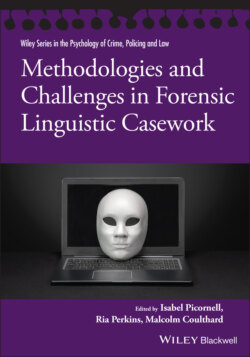Читать книгу Methodologies and Challenges in Forensic Linguistic Casework - Группа авторов - Страница 14
Section 2: Meaning and Interpretation
ОглавлениеThese chapters are concerned with casework covering linguistic analysis of how language is produced and how we derive meaning from it. In Chapter 7, Gerald McMenamin provides a strong opening to this section on how immigrant and multilingual communities are denied their constitutional rights and due process because of their lack of understanding of the English language. In this American court case centering on the admissibility of evidence provided during police interviews, judges in the trial and appellate courts concluded that a Hispanic woman understood English sufficiently well to waive her Miranda rights to not self-incriminate, in spite of linguistic evidence to the contrary.
This is followed by Chapter 8 on linguistic “oddities,” in which Isabel Picornell and Malcolm Coulthard discuss how language design alerts linguists to the possibility that the context in which it has been produced has been faked. Coulthard addresses the linguistics of faked confessions, while Picornell demonstrates how being alert to linguistic red flags can identify falsified contexts that are not initially apparent.
From identifying language that is wrong for its context, we move to assessing purpose and the implicit meanings conveyed by an utterance. Deriving meaning from language in context is central to Tanya Karoli Christensen’s analysis in Chapter 9 of ISIS recruitment chat logs to assist the police in understanding what the individuals concerned were discussing.
Finally, I. M. Nick concludes with an analysis of the language of suicide. Chapter 10 demonstrates the increasing cross-disciplinary mix of linguistics and forensic behavioral sciences to create new areas of research—in this case, suicidology.
